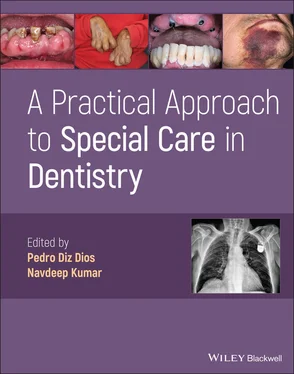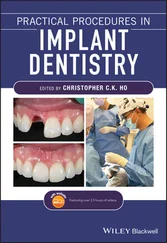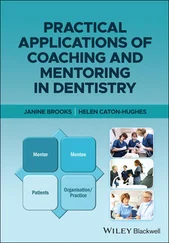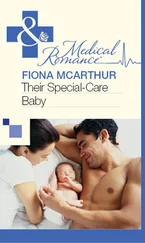A Practical Approach to Special Care in Dentistry
Здесь есть возможность читать онлайн «A Practical Approach to Special Care in Dentistry» — ознакомительный отрывок электронной книги совершенно бесплатно, а после прочтения отрывка купить полную версию. В некоторых случаях можно слушать аудио, скачать через торрент в формате fb2 и присутствует краткое содержание. Жанр: unrecognised, на английском языке. Описание произведения, (предисловие) а так же отзывы посетителей доступны на портале библиотеки ЛибКат.
- Название:A Practical Approach to Special Care in Dentistry
- Автор:
- Жанр:
- Год:неизвестен
- ISBN:нет данных
- Рейтинг книги:3 / 5. Голосов: 1
-
Избранное:Добавить в избранное
- Отзывы:
-
Ваша оценка:
- 60
- 1
- 2
- 3
- 4
- 5
A Practical Approach to Special Care in Dentistry: краткое содержание, описание и аннотация
Предлагаем к чтению аннотацию, описание, краткое содержание или предисловие (зависит от того, что написал сам автор книги «A Practical Approach to Special Care in Dentistry»). Если вы не нашли необходимую информацию о книге — напишите в комментариях, мы постараемся отыскать её.
Learn to treat dental patients with disabilities or who are medically compromised A Practical Approach to Special Care in Dentistry
A Practical Approach to Special Care in Dentistry
A Practical Approach to Special Care in Dentistry — читать онлайн ознакомительный отрывок
Ниже представлен текст книги, разбитый по страницам. Система сохранения места последней прочитанной страницы, позволяет с удобством читать онлайн бесплатно книгу «A Practical Approach to Special Care in Dentistry», без необходимости каждый раз заново искать на чём Вы остановились. Поставьте закладку, и сможете в любой момент перейти на страницу, на которой закончили чтение.
Интервал:
Закладка:
Each case includes the application of a risk assessment framework of medical, social and dental risk factors. This allows the systematic consideration of appropriate modifications that should be implemented prior to commencement of dental treatment, thereby reducing complications and treatment planning errors.
Subsequently, the main oral findings and the specific considerations for dental management for each condition/disease are discussed. The ACCESS mnemonic is utilised to ensure that six domains which address different aspects of care are considered:
1 Access
2 Communication
3 Consent
4 Education
5 Surgery
6 Spread of infection
Lastly, each chapter concludes with background information on each condition/disease, with updated medical content on their definition, aetiopathogenesis, clinical presentation, diagnosis, treatment and prognosis.
In 2006, under the guidance of Professor Crispian Scully, we published the book entitled Special Needs in Dentistry (Handbook of Oral Healthcare) . A few years later, in December 2015, we received an email announcing that ‘The Special Care Dentistry book will be 10 years old next year! I am intent on producing something that focuses on the younger generations and that can be regularly updated’. The tragic and premature loss of Professor Scully deprived us of his academic guidance, editorial experience and enormous knowledge. We have therefore put all our efforts into this new publication, which launches today thanks to the contribution of a group of relevant collaborators. We hope it will serve as a tribute to our master, mentor and friend.
Pedro Diz Dios and Navdeep Kumar
1 Physical Disability 1.1 Cerebral Palsy
Section I: Clinical Scenario and Dental Considerations
Clinical Scenario
A 24‐year‐old patient attends your dental practice with acute pain from a lower right molar tooth. Two courses of antibiotics prescribed by the general medical practitioner have been ineffective. She attends alone and has used a private taxi that has been able to accommodate her wheelchair.
Medical History
Spastic cerebral palsy
Degenerative disc disease and spondylosis of the cervical spine
Adjustment disorder (presented after divorce; undergoing follow‐up by psychiatry)
Medications
Trihexyphenidyl hydrochloride
Baclofen
Bromazepam
Lormetazepam
Mirtazapine
Omeprazole
Dental History
Irregular dental attender – avoided attending as she is anxious that dental treatment will make her gag
No experience of local anaesthesia to enable dental treatment in the dental clinic setting
Previous dental treatment provided under general anaesthesia on 2 occasions, when she was a child
Good level of co‐operation
Brushes her teeth regularly herself, although she admits difficulty accessing the posterior teeth due to her gag reflex and involuntary movements
Social History
Lives alone and is not currently working
Divorced and does not have a good relationship with her ex‐husband's family; no children or close family
A caregiver visits every morning to help with basic activities of daily life
Wheelchair user ( Figure 1.1.1)
Limited financial resources
Oral Examination
Involuntary movements of the jaw
Moderate sialorrhoea – saliva does not spill over the vermilion border
Pronounced gag reflex
Mouth in very poor condition, with numerous carious teeth and deposits of calculus ( Figure 1.1.2)
Caries: #11, #15, #17, #21, #22, #25, #26, #27, #35, #37, #41, #42, #44, #45 and #48
Tenderness on palpation: #48; no associated swelling
Missing teeth: #36, #46 and #47
Radiological Examination
Orthopantomogram – artefacts due to the patient's movement
Supplemented by long‐cone periapical radiography anteriorly
Endodontic treatment of #11 and #21 (obturation satisfactory; no periapical radiolucent areas)
Extensive, deep and unrestorable caries in #15 and #48 (with pulpal involvement)
Restorable caries in #17, #22, #25, #26, #27, #35, #37, #41 and #44
Recurrent caries associated with the dental fillings in #16, #42 and #45
Missing teeth #36, #46 and #47 Figure 1.1.1 Patient with spastic cerebral palsy and preserved intellectual ability in the dental practice. Figure 1.1.2 Extensive caries upper central incisors.
Structured Learning
1 The #48 is painful on palpation and you suspect periapical periodontitis. The patient's temperature is not elevated and there is no associated lymph node enlargement. What emergency management would you propose and why?It is important to treat the dental infection urgently to reduce the risk of significant morbidity and life‐threatening sequelae, including Ludwig's anginaHowever, within the last 20 years, antimicrobial resistance has become a significant issue with prescribed antibiotics/dosages being ineffectiveHence it is important to remove the source of infection, establish drainage and prescribe analgesicsFurther effective antibiotics may also enable successful dental intervention at a later date, namely effective local anaesthesia followed by removal of the infected pulpal contents or by extraction of the toothDrainage of an associated abscess should also be considered if swelling develops
2 The patient has received appropriate and high‐dose antibiotics and requests that you attempt to extract the tooth the same day. Although she has no previous experience with local anaesthesia, she appears to be co‐operative and has capacity. What would you discuss with her?Extraction of #48 is the preferred treatment option as:The use of rotary instrumentation for caries removal is associated with increased risk due to the posterior position of the tooth, uncontrolled movements and increased gag reflexThere is limited access to allow for endodontic treatment (e.g. due to difficulties accessing the posterior sections of the mouth)The patient struggles to access her posterior teeth for cleaningAs this is an urgent procedure, the dental extraction can be attempted in the dental chairGiven her considerable dental treatment needs, this can be followed up by the provision of non‐urgent procedures (e.g. restorations) provided in a hospital setting under general anaesthesiaProsthetic rehabilitation and subsequent follow‐up/treatment sessions should be performed in the dental clinic, if possible
3 What factors are considered important in assessing the risk of managing this patient?SocialLack of available escortTransport difficulties when attending dental clinic/hospitalLimited financial meansMedicalNeck position compromised by the dental chair and by problems in the cervical spine; consider the option of treating the patient in her wheelchairRisks associated with general anaesthesia may be increased in patients with cerebral palsy (hypothermia, hypotension)Adjustment disorder may reduce compliance and manifest as increased anxiety/tearfulnessDentalLocal stimuli and stress can increase involuntary movementsGag reflexLimited access to the oral cavitySialorrhoea compromises operatory field isolationPoor self‐cleansing of the oral cavityUnsupervised oral hygiene habits
4 The patient requests premedication/sedation. What do you need to consider when selecting the correct approach?The patient is already taking oral benzodiazepinesHence, a medical consultation is required before proceeding, given the risk of synergy with some of the drugs the patient is taking, i.e. the effects can be increased when midazolam is combined with bromazepamGiven the absence of chronic respiratory problems, nitrous oxide may be used
Читать дальшеИнтервал:
Закладка:
Похожие книги на «A Practical Approach to Special Care in Dentistry»
Представляем Вашему вниманию похожие книги на «A Practical Approach to Special Care in Dentistry» списком для выбора. Мы отобрали схожую по названию и смыслу литературу в надежде предоставить читателям больше вариантов отыскать новые, интересные, ещё непрочитанные произведения.
Обсуждение, отзывы о книге «A Practical Approach to Special Care in Dentistry» и просто собственные мнения читателей. Оставьте ваши комментарии, напишите, что Вы думаете о произведении, его смысле или главных героях. Укажите что конкретно понравилось, а что нет, и почему Вы так считаете.












